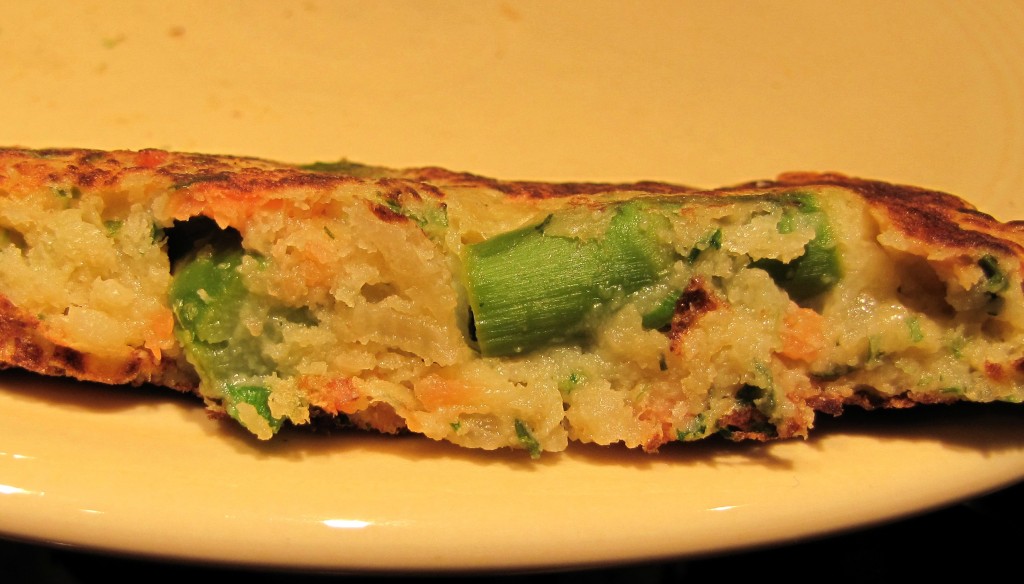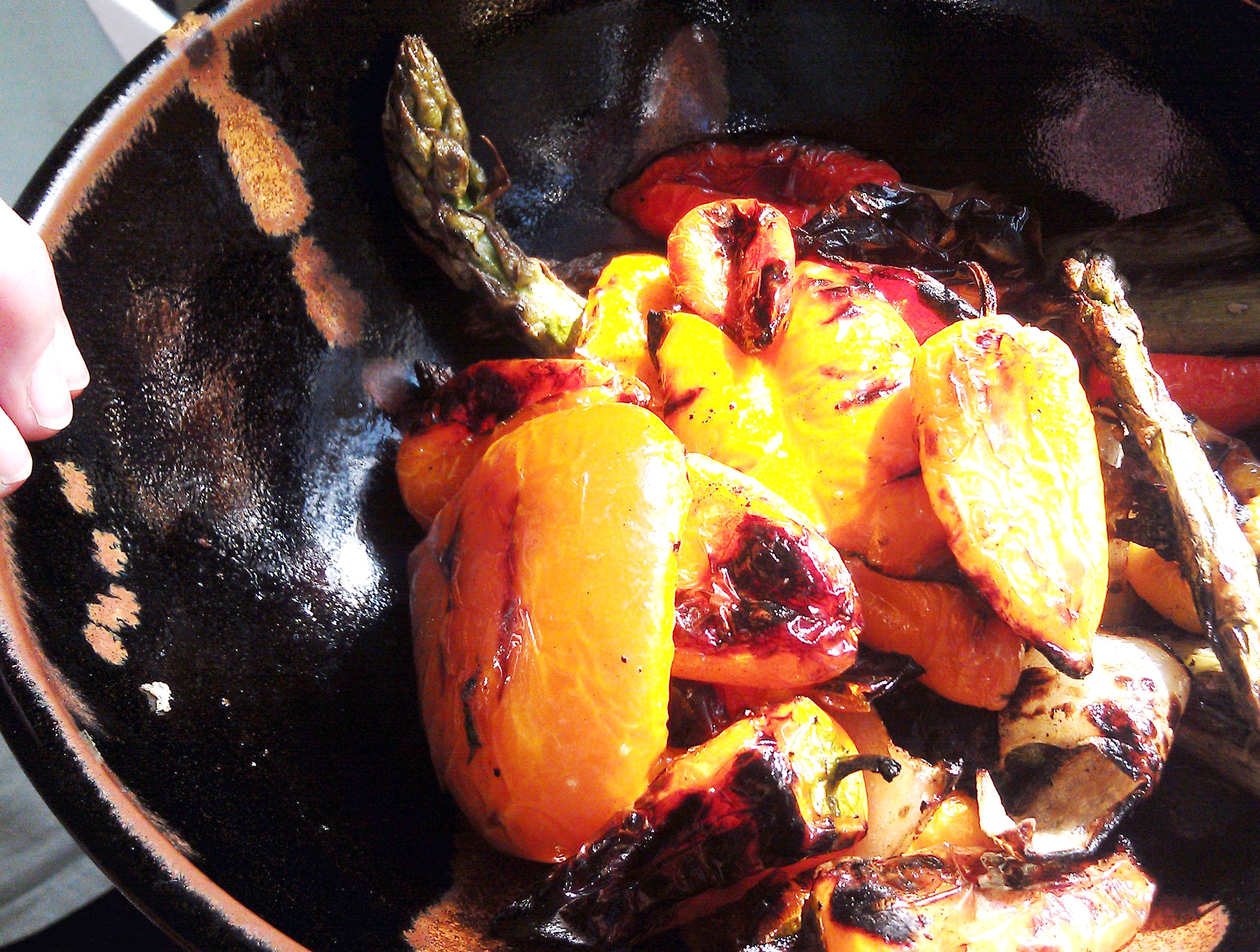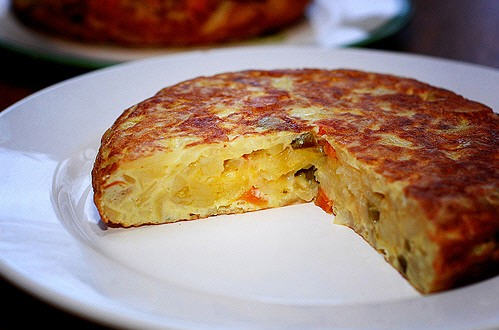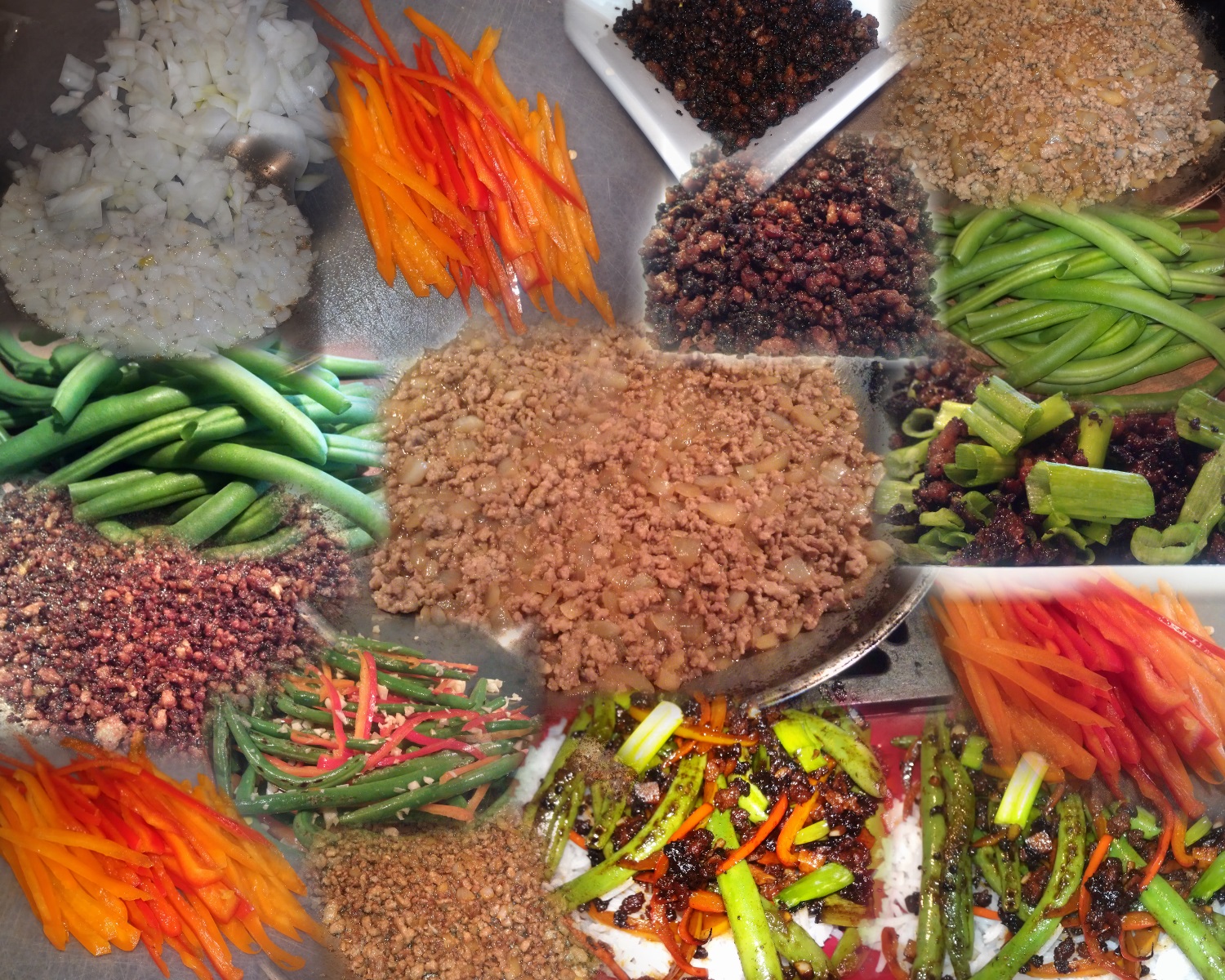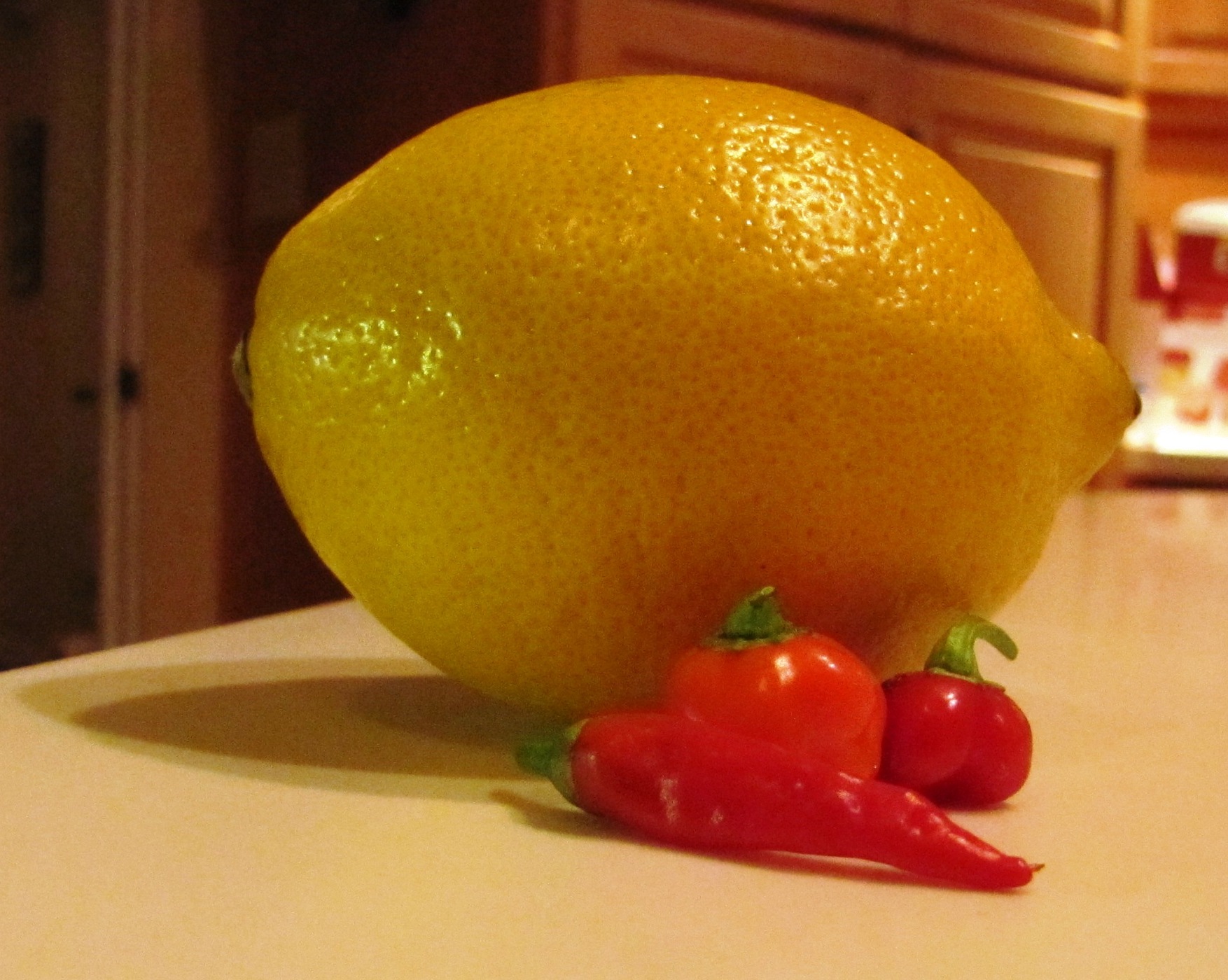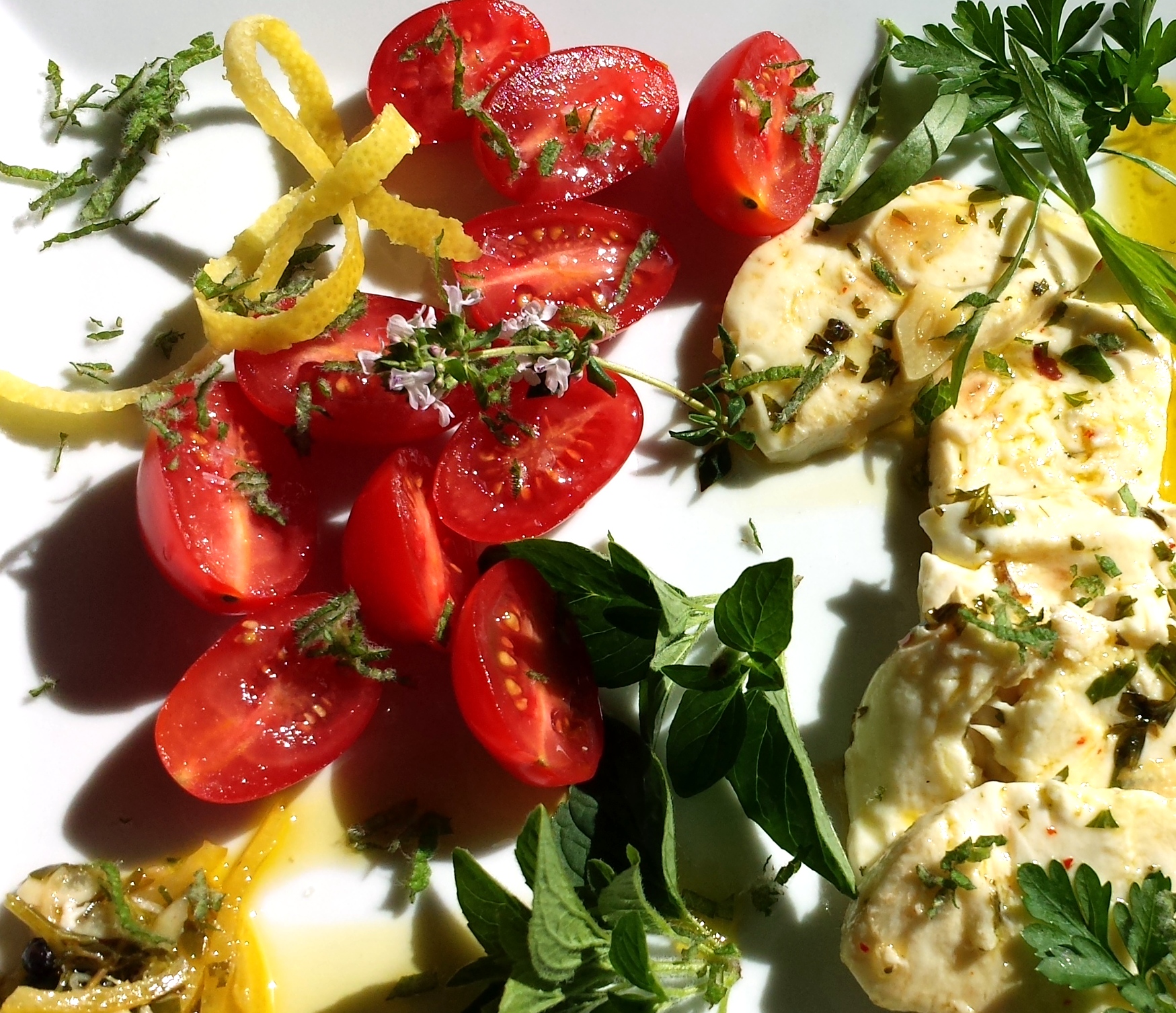Respect for Your Ingredients
When you’re cooking soup with lots and lots of beautifully fresh asparagus, you’ve got to remember that the asparagus is the superstar. But – even as sometimes happens in the movies – the supporting characters can make the star shine even brighter. My goal was to make cream of asparagus soup that my my mother in law would love, but that had a few small twists to help pop out the flavor of the fresh organic asparagus we’d picked up at Schuh Farms, our neighborhood farmstand. OK, it was from California, but it was *very* fresh, it was organic (just try and find inorganic asparagus – I dare you!), and we don’t have any local asparagus of note here in Seattle quite yet.
The First Rule: Use a LOT of Asparagus
It’s always startling when I say this, but roughly a pound of asparagus per serving is about right. The recipe doesn’t scale linearly, so you can get away with using, say 8 pounds of asparagus for 10 people. But really, 10 lbs. will not hurt. I promise. You’re just gonna need a really big pot.
The Second Rule: Buy from People You Trust – The Central Market Story
I buy produce at Schuh’s, but when I’m picking up a bunch of stuff and need to shop at a supermarket, there is only one place I go – Central Market. Central is a small locally-owned chain (I think they have 5 or 6 stores), and here’s why you shop there:
So I’m wandering about in my usual contemplative daze through the produce department. I want citrus. Many interesting recipes for C of A soup call for a bit of lemon, but I want something with a gentler, friendlier nature. Ah! Cara Cara oranges sound right. Where are they? So – I ask one of the produce peeps where they are, and he takes me to them. I sort through a dozen and find two perfect oranges. Yes! The guy is watching me, and asks, “Do you mind if I ask what you’re going to do with those?”
“Sure – I’m going to use the juice and zest in cream of asparagus soup.”
“Cool idea. You know, for the same price, though, you might want to consider the Heirloom navels. Their flavor – and probably the zest – should stand up better to cooking than the Cara Cara and they’re not as sweet, so you won’t have as much competition with the asparagus.”
LOVE. Thank you.
Off to the deli counter, which looks a little bit like this:

This is about 1/16th of the deli section. . .
Hmmmm. . .I love asparagus wrapped in San Daniele prosciutto. I think I’ll get some to crisp up for the garnish. One of the folks behind the deli counter asks me what I need, and I vaguely say “a little San Daniele prosciutto,” Nothing daunted, he asks “How much – two – three pounds,” Haha. OK, I need about 8 slices. “Do you mind if I ask what you’re going to be using it for,” (are you sensing a pattern forming here?)
“Sure – I’m going to slice it into shreds, crisp it up and use it as a garnish for cream of asparagus soup.”
“Sounds awesome. You might want to consider either the Speck or the Jamon Serrano instead, though – they’ll crisp easier and they have a beautiful crackling texture when you cook them. Would you like to try a slice of each?”
Ummm. . .sure. . .this was clearly not a trick question. I tried ’em both and I loved the Jamon Serrano, which was about six bucks a pound less than the San Daniele.
Both these suggestions worked out really well – I love love love markets where the staff actually:
- Knows what the hell they’re talking about
- Is excited about sharing their knowledge
- Doesn’t try to constantly up sell. Sure, sometimes the costly product is the right product, but you know – sometimes it’s really not.
Who wouldn’t want to shop at a place like that? There must be someplace like that where you live. What’s it’s name? Why do you like it?
Getting Ready to Make the Soup
I get home, offload supplies, clean up the asparagus, snip off a few choice tips with my gorgeous new ceramic knife. A dear friend and frighteningly smart social marketing consultant just gave me a set of them – I normally don’t get excited about ceramic, but these are so light, and easy to use, with a well-shaped handle. They’re so sharp, you can feel them cutting the air in half as you move them towards the food. Thank you, Kathryn Courtney Wachs, you’re one of the best eggs I know.
OK, I cut up and prep what real chefs call the mise, but I think of as “all the sh*t I need to make the soup”, as shown below:

Oops sorry – but this *is* an important ingredient after you’ve finished using the very very sharp ceramic knife
I’m sorry, these darned blogs, what I meant was (waving hands in the air) “Pay no attention to the little martini on the counter, this is what you really want.” Chopped onion, sliced leek, little bit of minced garlic, orange zest from heirloom navels, juice from one orange. We ate the other one. Hey, we were hungry!! Yes, that is a Meyer Lemon, thank you, but I decided against using it.
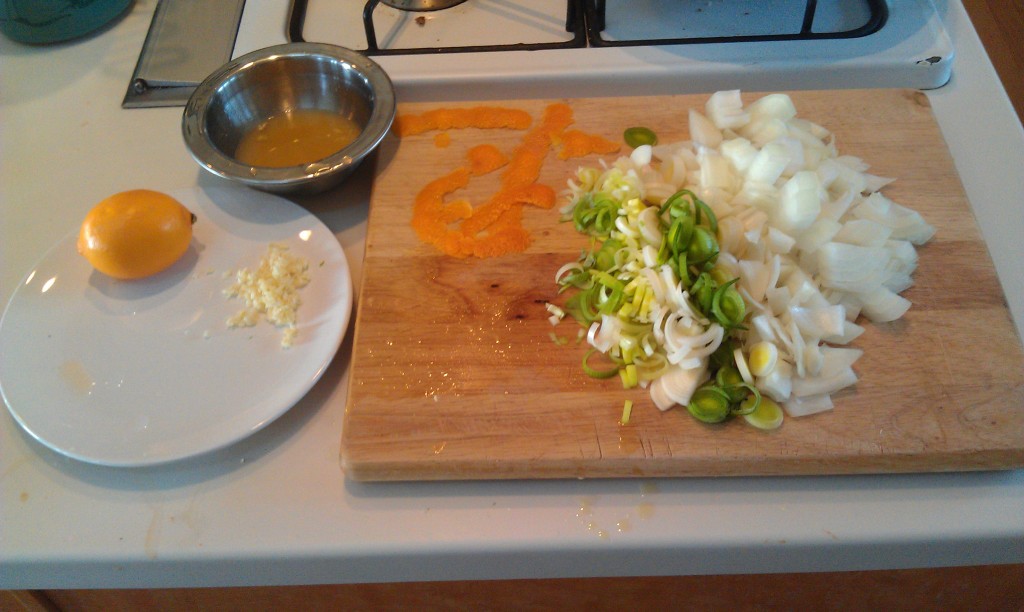
Ready to start preparing the soup!
By the way, might I add that the leeks were guys that had wintered over in our garden and were awfully good.
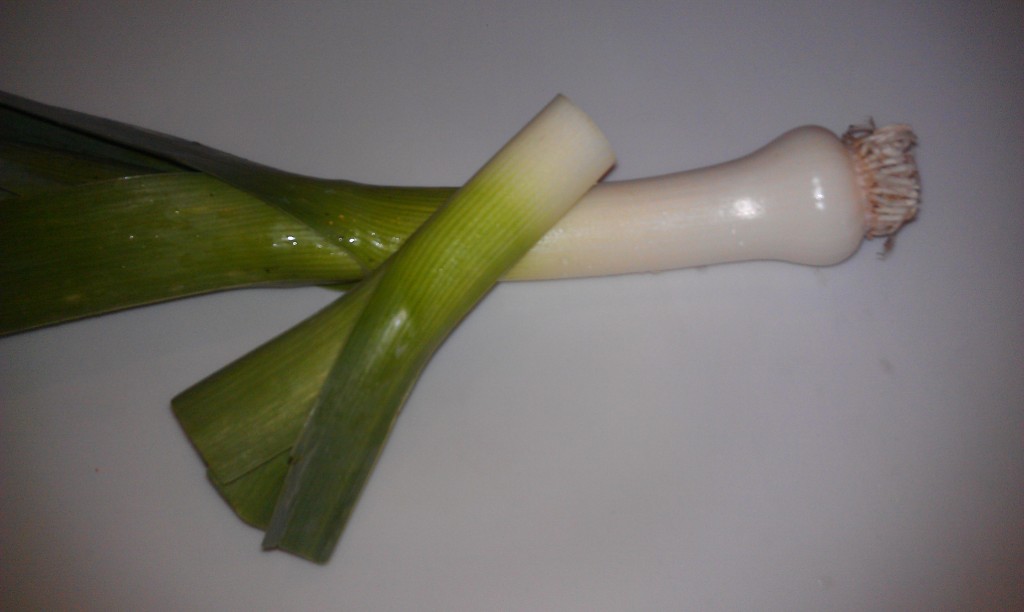
- Sweet overwintered leeks from our garden
So, OK, you’re telling a nice story, but how do I make this soup already??
Thanks for asking! Here’s how I ended up putting it together:
Cream of Asparagus Soup with Crisp Prosciutto, Melted Orange Zest and Asparagus Tip Garnish
I have *got* to come up with a snappier name for this dish – any ideas??
Ingredients for about six to eight servings:
- Six pounds of the freshest asparagus you can find
- About two quarts good quality chicken broth
- A pint or a pint++ of half and half (I’m a chicken, but next time I swear I’m using heavy cream, it’s not like we’ll be eating this every day)
- About the equivalent of a stick of butter. Tip: This is one of those times when using good quality cultured butter makes a real difference in the taste.
- Nutmeg – I used about a half teaspoon or so – this is really a matter of taste, so add it a bit at a time. The idea is you do *not* really want to taste the nutmeg, you just want to know that something’s going on that makes the asparagus flavor more pronounced.
- Four or five leeks, rinsed, white part and light green part sliced. Or, half a medium sized white onion, chopped, and the two nice overwintered leeks from your garden. Next time, I’m going with the all-leek motif, we loved the flavor and wanted more!
- Two or three garlic cloves, finely minced.
- A few slices of prosciutto. Using a sharp knife, you’ll slice the prosciutto into approximately 1/2″ wide slices, which you’ll slowly crisp up in a tiny bit of butter or olive oil. It’s a garnish! But – there’s something about asparagus and prosciutto that is just irresistible. Let your conscience be your guide. I generally err on the side of “use a little more”. Your mileage may vary.
- An heirloom navel orange. Or a navel orange. Or some kind of orange that’s not too sweet. You’ll want to slice off as many long strips of zest (the orange colored skin, with as little of the white part (sometimes called “pith”, probably because that’s what it tastes like) as possible. Then juice the orange into a container, ready for action.
- Freshly ground black pepper and salt to taste. Tip: When you’re making most any dish, it’s a good idea to not add much salt at all (unless it’s necessary for some element of the cooking) until you’re close to the finish line. Yeah, your friends will ask for a taste about three seconds after you’ve started cooking something and say, “this needs salt”. Duh. It will have salt when the time is right, OK? Now sod off. Alternatively, offer them a large glass of wine or a martini – that usually distracts most people from trying to taste what you’re making before it’s ready to be tasted.
- A large pot for the soup
- An immersion blender (best), a blender-blender (not bad), a food processor (works, but really not the best tool for the job)
Preparation
Once you’ve cut everything up, make a large martini. I like olives. Many olives. But I also like a nice strip of orange zest. Oh, wait, sorry. . .here goes:
Rinse and prep the asparagus. Snap off the stem ends and reserve for another purpose. Compost is an excellent option. Slice off 15 or 20 of the tips (make the slices about 1-1/2″ or so. Put the tips in a microwave-safe bowl, add a scant teaspoon of water, and nuke ’em for about a minute, then remove. You’re really just trying to blanch them, not cook them.
Slice the rest of the asparagus into chunks about an inch or two long. You’ll end up with a good sized bowl full of asparagus pieces.
Melt a tiny bit of butter in a fry pan over medium heat, then add the strips of prosciutto. Toss around to coat, and make sure they’re separated from each other. Cook on low heat, stirring and turning gently now and then.
Melt the rest of the butter in the bottom of your stock pot over medium heat. When it’s stopped frothing, add the onion / leeks / whatever you chopped up and stir about to coat. Cook for about six or seven minutes, stirring frequently, you do not want the onion to burn or really even to sear, so turn the heat down if this appears to be happening.
Add the garlic and stir it in for a minute or two until you can really smell it.
OK, toss in the sliced asparagus, and toss, stir until it’s well coated with the melted butter. Cook over medium-low heat for about ten minutes, stirring regularly until it’s softened.
Add about half the nutmeg, the strips of orange zest and gently stir them in (try not to break up the zest, you’ll be removing it before you serve the dish). This is a nifty trick I learned from the brilliant Kathy Gori, proprieter of The Colors of Indian Cooking, which I recommend visiting. Great food and wonderful writing!
The idea is that you add aromatics to the pot before you put the liquids in, and fry them up just a bit. It can be little tricky, since you don’t want to burn them, but putting them in at the very end mixes them with all the other stuff you’re frying up and makes burning them far less likely. Be careful and I think you’ll love the result. You’ll totally love the remarkable aroma of the nutmeg and orange as they (gently) fry up.
Add the juice from your orange and cook until it’s very gently simmering. Simmer for just a bit. I like to add the juice first so I can simmer it down a little for. . .ummm. . .”flavor intensification purposes”.
Add about two quarts of good quality chicken broth, and stir gently to mix it with the fried ingredients. Then add the half and half. OR GO WILD – USE HEAVY CREAM. I know a disreputable cardiologist who will happily write you a prescription for this allegedly deadly substance. 🙂
Bring to a gentle simmer – you don’t want the broth to boil. Stir occasionally. Simmer for about ten minutes or so. Now it’s time for serious pulverization to happen.
Kitchen Equipment – The Immersion Blender
You may have seen the industrial quality immersion blenders used on food porn shows like Top Chef, Iron Chef, Tungsten Chef, Aluminum Chef and that cute chef who everybody seems to dislike, but I kinda like her. Let’s call her Perky Chef.
You don’t need one of these. But you’d be smart to nip out and pick up a home version – you can get a very good quality immersion blender for 50-75 bucks or so, and it’s worth its weight in Perky when you need it, which is actually fairly often.
In a fit of parental adoration, I just gave ours to our daughter (“oh honey, I’m glad you liked it. Why don’t you just go ahead and keep it, I can get another one.” Yes, I am A SAP, but I loves me my girl).
So, I had to use our food processor (with the chopping blade) to pulverize the soup. DANGER! Food processors can be quite dangerous to use for processing batches of hot liquid. Note: before processing – use tongs or fingers or whatever you like to remove the pieces of orange zest. Do not toss them – they will have a wonderful use in a moment. Taste a bit of the zest. Just a wee nibble. Amazing how a little time in the hot soup tones down the zesty-ness and turns it into something lush and lovely. If you miss a small piece or two, it is not a big deal, but do try to remove all the larger pieces.
Federally mandated Safety Instructions follow: Here are the things you really want to do to 1) Get a good result 2) Avoid scalding yourself or enjoying a food processor mini-explosion from the buildup of steam inside the container, or the worst danger of all 3) Splash boiling soup into your martini, rendering it unfit for further consumption.
- Process in batches – unless you have a totally enormous food processer. In any case, do not fill the food processor more than half full with each batch. Takes time? Yes. Is a pain? Yes. Can leak a bit of liquid even in the best of circumstances? Sure. Remind me why I gave my only immersion blender to my daughter. Oh yeah. . .finger. wrapped. I am a SAP.
- To process, do not put the feed tube plug in tightly at first – leave a little opening for the very hot vapors to depart the vicinity of the bowl in a non-explosive fashion.
- Before you turn the processor on to continuous pulverization, give it a few short jabs. Trust me on this.
- Did I mention not filling the processor more than half full?
- You shouldn’t have to process each batch more than 10-15 seconds or so.
After you’ve finished each batch, pour it into a large bowl. When you’re done, pour the now-creamed soup back into the stock pot. Or, use the immersion blender, which means putting the blender into the stockpot and moving it around. You should have a bit of height between the top of the soup and the top of the stock pot, but that’s about it.
Taste the soup. Smell the soup. Bond with the soup. Correct for seasonings – yup, now you can add the salt and pepper you think it needs. You can also add another pinch of nutmeg if you think you need it. I always go light on salt and pepper, because it’s so easy to put a salt shaker and pepper mill on the table. You should be able to cleanly taste the asparagus and the leeks. Bring the soup back to a gentle simmer. Hot soup is the best!
The Good News
My optimistic heart says that since I’ve given away my old immersion blender to my daughter, at least I can now get my heart’s desire – the KitchenAid 300W hand blender.
Oh, and the other good news – this soup is so good that – as my Executive Pastry Chef niece Sarah likes to say, “It will make you want to grab a chair and throw it through a window.” See Sarah’s earlier post about why you might do this here.
You’ve blended your soup. Now what?
Good going. You now have a large stockpot full of simmering deliciousness, with seasonings “corrected”. Time to serve. Here are a few tips to make your bowls of soup pretty and even more delicious.
- Heat your bowls. You can put a stack of soup bowls in a microwave (check for microwave safety first) and run the microwave for about a minute and a half. Ta da! A nice warm stack of soup bowls.
- Remember the little crispy strips of prosciutto you made? Now’s the time to use them.
- Those big chunks of delectable orange zest that you removed from the soup before blending? Take a very sharp knife and slice them into a fine julienne.
- Get your blanch’ed asparagus tips ready.
- Plate by ladling the soup into the bowl, adding a few artful strips of prosciutto, an asparagus tip or two, and drift a few of the julienned orange zest bits on top of the other garnishes. This is the part that I’m working hard on. I’m OK, but making your food look beautiful means you’ll hit every sense but sound – it will taste gorgeous, smell remarkable, and look beautiful. The trifecta. The sound comes when your guests say, “OMG that is *so* good!”
Serve With: We like to serve this with a simple green salad and some nice warm slices of baguette. It doesn’t need much else. Unless you’re in a major feast mode, a bowl or so of this soup + salad + bread + a Perky white wine = a really good meal.
Editors Note: We are not thrilled with the picture below, the prosciutto looks like sun dried tomato and we forgot to wipe down the edge of the bowl. As we noted, we’re working on the whole “plating” thing. Click the image twice and it will look a little bit nicer.

Finally -the asparagus soup in its bowl, soon to be eaten - see the wee little bits of orange zest?
The resul




